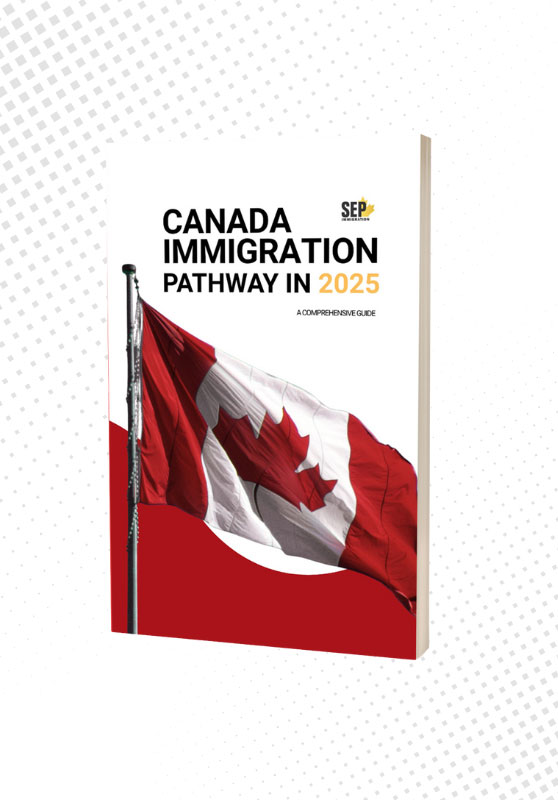Canada offers multiple immigration programs for skilled workers, but Express Entry and the Provincial Nominee Program (PNP) are two of the most common—and often misunderstood. Both can lead to permanent residency, but they follow different rules, timelines, and eligibility requirements.
This guide breaks down what each one involves, how they compare, and what to consider before choosing one over the other.
Table of Contents
ToggleWhat Are Express Entry and Provincial Nominee Programs?
When people think about moving to Canada as skilled workers, two options usually come up: Express Entry and the Provincial Nominee Program (PNP). Both can lead to permanent residence, but each one works differently. It’s helpful to get a clear picture of what each program involves before deciding which one to pursue.
Express Entry
Express Entry is the federal government’s system for selecting skilled workers. It’s used to manage applications under three main programs:
- Federal Skilled Worker Program (FSWP): for individuals with work experience in skilled roles outside of Canada.
- Federal Skilled Trades Program (FSTP): for people trained and experienced in specific trades.
- Canadian Experience Class (CEC): for those who’ve already worked in skilled jobs within Canada.
To get started, you fill out an online profile. That profile is given a score, based on factors like your age, education, work history, and how well you speak English or French. This scoring system is called the Comprehensive Ranking System, or CRS.
Every few weeks, the government holds draws. If your score is high enough, you’ll receive an invitation to apply for permanent residence. A job offer isn’t required, but it can push your score up and make a difference in competitive draws.
Provincial Nominee Program (PNP)
The PNP works a bit differently. Instead of applying through a national system right away, you start by applying to a province or territory. Each one has its own streams, its own rules, and its own list of in-demand occupations. These programs are built around local needs—what’s in short supply in one province might not be in another.
Once a province nominates you, that nomination gives your application a significant advantage. If it’s connected to Express Entry, it adds 600 points to your CRS score, which almost guarantees you’ll get picked in the next federal draw.
Some streams aren’t linked to Express Entry at all. These are called base streams, and they involve submitting a paper application directly to Immigration, Refugees and Citizenship Canada (IRCC) after you’re nominated. Those applications typically take longer to process.

Differences Between Express Entry and PNPs
At first glance, Express Entry and the Provincial Nominee Programs might seem like two versions of the same thing—they both lead to permanent residence, they both require work experience and education. But once you look closer, the differences start to stand out. These differences can affect everything from how you apply to how long you’ll wait for a decision.
Let’s break it down by comparing the advantages and limitations of each.
Express Entry: Pros and Cons
- Shorter processing time
Most applications are finalized within about six months once submitted. That speed is one of the main reasons people aim for Express Entry if they qualify.
- Points-based selection
Your success depends on your CRS score. This system prefers younger applicants with high language scores, advanced education, and Canadian work experience. Those with lower scores might not get invited unless they improve their profile or secure a nomination.
- No fixed quotas by province
You can live and work anywhere in Canada (except Quebec, which runs its own immigration program). There’s no commitment to settle in a specific province.
- Job offer not mandatory
While having a valid job offer adds points, it’s not a strict requirement. Many people are invited without one.
- Highly competitive
CRS cutoffs vary with each draw, and they’ve generally stayed high in recent years. If your profile doesn’t score well, you could be waiting indefinitely.
Provincial Nominee Programs: Pros and Cons
- Easier access for lower-scoring candidates
A provincial nomination adds 600 points to your CRS score if you’re also in the Express Entry pool. That one move can turn an average profile into a top contender.
- Tailored to local labour markets
Some provinces prioritize occupations where they’re facing shortages. Even if your CRS score isn’t ideal, your work experience could still open doors through a targeted stream.
- Settlement requirement
You must show intent to live in the province that nominated you. While the government can’t legally force you to stay, this is taken seriously—moving elsewhere right away could cause problems later.
- Longer and more complex process
The application is split into two parts: first, you apply to the province, and once nominated, you submit a separate application to IRCC for permanent residence. Some provinces also require a job offer or direct employer support. Base streams that aren’t linked to Express Entry can take longer, especially since they’re paper-based.
- Limited quotas
Each province has a cap on how many nominations it can issue annually. Some popular streams fill up quickly or open for very short windows.

Conclusion
Express Entry and the Provincial Nominee Programs lead to permanent residence but follow different rules and timelines. Express Entry works well for candidates with high CRS scores—especially those with strong language skills, education, and experience. It’s faster and offers the freedom to settle anywhere in Canada (outside Quebec).
PNPs, on the other hand, are often a better fit for applicants whose profiles don’t score high enough in Express Entry alone. A nomination can change the outcome entirely, but it does come with additional steps and a requirement to settle in the nominating province.
The better option depends on your background and where you’re most likely to qualify—not which one looks simpler on paper.
FAQs
What is the difference between PNP and Express Entry?
Express Entry is a federal system that selects candidates based on a points system. PNPs are run by individual provinces to nominate people who meet local labour needs.
Does PNP take longer than Express Entry?
Usually, yes. PNPs involve a two-step process: first the provincial nomination, then federal processing. Express Entry alone is typically faster.
Can I get PNP without Express Entry?
Yes. Base PNP streams don’t require an Express Entry profile and are processed separately.
Can I apply for both PNP and Express Entry?
Yes. Many candidates apply to both. A PNP nomination boosts your Express Entry score by 600 points.





